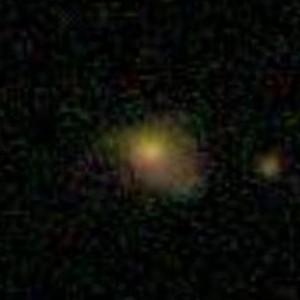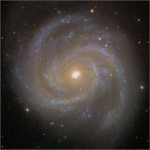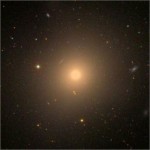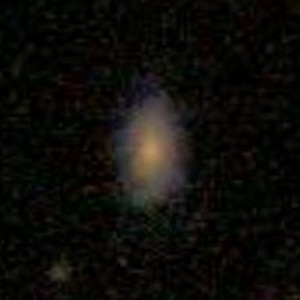
On July 28, 2010, nearly 900,000 galaxies were put into a public database, and this is Galaxy #1, or SDSS J000000.41-102225.6, and don’t tell me astronomers don’t know how to name things. Galaxy #1 is probably an elliptical; the rest of the 900,000 are either ellipticals or spirals or something else, and were identified as such by a few astronomers from notable universities, plus 100,000 housewives, high school students, helicopter pilots, physicians, school teachers, truck drivers, secretaries, and a mobile home park manager.
The 900,000 galaxies were originally photographed by the Sloan Digital Sky Survey, a systematic, controlled, calibrated survey of a reasonable fraction of the sky and all the galaxies in it. The Sloan was also digital and public, so that astronomers from Iowa and Greenland and Zimbabwe who are not rich enough to own telescopes can now download galaxies and do astronomy.
Meanwhile, a few Sloan astronomers had wanted a sample of elliptical galaxies, and since computers identify shapes badly and the human eye does it superbly, the Sloan astronomers created a website called Galaxy Zoo, put the galaxies on it, and asked for help classifying: look at a galaxy, decide it’s a spiral, click “spiral.” That’s when the tens of thousands of school teachers and helicopter pilots from all over the world signed up. Galaxy Zooites – their name for themselves – ended up creating a database of hundreds of thousands of galaxies, each one classified by shape.


Zooites are things of beauty and a joy forever, but astronomers are extremely picky about data quality. So each one of the 900,000 galaxies had to be classified by a number of people. Fifty-nine Zooites looked at Galaxy#1: 36 Zooites, 61 percent, click-voted for elliptical. But astronomers want at least an 80 percent vote – “superclean” is 95 percent, “clean” is 80 percent, “cleanish” is 60 percent, and 50 percent is “greater” – and at 61 percent, Galaxy #1’s ellipticity is “cleanish” but uncertain.

Here’s Galaxy #2: only 18 votes, 79.7 percent for spiral, pretty certain. Here’s all nearly-900,000.
The Zooites, now over 300,000 regular people, have become part of astronomical research and publication. They’re the backbone, not only of this database, but of 17 papers published in scholarly journals. And as this latest points out, Galaxy Zoo not only begot Galaxy Zoo 2, but also a whole Zooniverse of new projects: Moon Zoo, Galaxy Zoo Hubble, Solar Stormwatch, Understanding Cosmic Mergers, The Hunt for Supernovae.
And since they’re using the Zooites to finally train computers to recognize shape, they’ve in effect created a sort of meta-entity, a hybrid of people/machines/astronomers. The Sloan survey was just the first of a number of astronomically large surveys, so this new hybrid creature, says the scholarly paper, can “produce rich seams of science.” Here, try it, it’s fun. Not to mention, they’ve got an iPhone app.
Photo credits: Sloan Digital Sky Survey
I really appreciate all the photos of the galaxies that I see in different photos. I never seen it personally but I know the beauty that it creates is very extraordinary.
It’s nice to look at the photos. The galaxies look beautiful on the night time. I appreciate this article. The study is interesting just like the quote stated above. It shows how beautiful the sky in the night.
Curtis Matthew
Webmaster, foilbusinesscards.org
Most Recent Blog Post – “gold embossed business card“
It’s awesome how we can have photos of galaxies that are millions of miles away…and even have clear ones to make up tis shape.